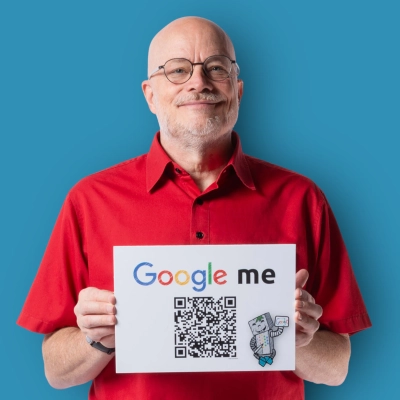Finding your first customers as a new business owner can be a challenging yet crucial step for success. We asked industry experts to share one piece of advice they wish they’d received when they were first starting out in terms of finding customers—and how it could have saved them time, money, or effort. Discover actionable approaches that will guide you in establishing a solid customer base for your new venture.
- Focus on Finding the Right Customers
- Validate Your Target Customer Segment
- Narrow Your Focus for Better Results
- Monitor Job Postings for Potential Clients
- Start Small to Build Strong Advocates
- Concentrate on High-Value Customer Segments
- Combine Relationship Building with Smart SEO
- Seek Clients with Growth Ambitions
- Learn to Qualify Clients Effectively
- Solve Industry-Specific Challenges for Success
- Prioritize Qualified Reach Over Broad Visibility
- Build Relationships Instead of Chasing Leads
- Manage Your Online Brand Reputation Early
- Identify Your Ideal Client Profile First
- Establish Trust Before Selling Your Service
- Harness the Power of Cold Email Outreach
- Listen to Your Target Audience First
- Believe in Yourself and Keep Trying
How to Find Your First Customers
Focus on Finding the Right Customers
If I could go back, I’d tell myself to stop trying to sell to everyone. In the beginning, I wasted so much time chasing people who were never really going to be customers. I printed flyers, cold-called, knocked on doors — you name it. A lot of folks listened, but only a handful ever turned into paying clients.
The truth is, not all customers are good customers. Some drain your energy, nickel-and-dime you, and never send referrals. If I had understood the value of finding the right customers sooner — the ones who actually believe in what you do — I would have saved money, stress, and years of trial and error. Once I narrowed my focus, everything got easier: sales calls were smoother, referrals started flowing, and my marketing dollars stretched further.
 Marcus Toler
Marcus Toler
CEO & Marketing Strategist, Go Local Productions
Validate Your Target Customer Segment
The one piece of advice I wish I had heard sooner is to validate your customers as much as your product.
It’s easy to become fixated on whether your product is effective or has appealing features, especially in the beginning. The question of whether you are aiming for the correct demographic — one that is sufficiently affected by the pain to embrace and pay for your solution — is frequently disregarded. Our first efforts were focused on promoting mobile deep linking to all members of the app ecosystem, but not everyone was equally interested. The consumer apps that were rapidly growing and investing heavily in user acquisition were in dire need of the attribution clarity that we provided. Growth became exponential once we focused on them.
In actuality, customer discovery is about identifying the customers who cannot afford not to use your product, not about asking if someone likes your idea. We would have avoided months of chasing cold leads and spending marketing budgets on unproductive, wide-ranging campaigns if I had absorbed that sooner. Deeper integrations, better onboarding, and fostering the kind of trust that converts early adopters into evangelists could have been accomplished with the time and money saved.
 Mada Seghete
Mada Seghete
Co-Founder, CEO and Marketing, Upside.tech
Narrow Your Focus for Better Results
When I was starting out, I wish someone had reined me in from trying to appeal to a broad audience and instead guided me to focus on deeply understanding a very specific customer segment. I spent too much time and money trying to reach “everyone that would need help with marketing,” and as a result, I watered down my message and results.
It finally clicked for me when I began interviewing potential clients and hearing about their pain points and struggles, then built my services and messaging directed at that. It changed the way I not only attracted more of the right customers, but it also produced better referrals because my work was so connected with their goals. Narrowing my focus sooner would have saved me months of trial and error, and I could have probably built momentum faster.
 Adam Bocik
Adam Bocik
Founder, Ever Green Results
Monitor Job Postings for Potential Clients
I could have benefited from the insight that the quickest method of locating paying customers is to monitor who is actively recruiting in your niche. In the early days, I did not consider job boards or freelance sites as I believed that they were meant only to offer temporary jobs. However, I realized that businesses listing the same SEO job several times or more in a quarter would tend to have a continuing need and a budget set aside. After taking some time to observe, I also contacted the managers of these listings personally rather than applying like the rest of the candidates.
That small difference provided me with a better success rate compared to cold outreach. The conversion rate of the 15 direct contacts with companies that kept posting SEO jobs was 9. They were paying between $800 and $1,200 a month, and this rapidly accumulated to $9,000 in regular income. It saved me time, as I ceased chasing those who were not looking for services at all.
 Jin Grey
Jin Grey
CEO and SEO Expert, Jin Grey
Start Small to Build Strong Advocates
When many founders (myself included) start out, the instinct is to cast the widest net possible — “Our solution is for everyone who needs X.” The problem? When you try to speak to everyone, you end up resonating with no one.
If I could go back, the advice I wish I had received is:
Find the smallest, highest-value customer segment you can serve so well that they become your biggest advocates — then expand outward.
How this would have saved time, money, and effort:
1. Sharper messaging: Marketing campaigns would have been laser-targeted instead of diluted across multiple audiences.
2. Faster traction: A smaller, well-defined market is easier to penetrate and dominate early.
3. Lower CAC: Resources wouldn’t be wasted testing channels and messages on audiences unlikely to convert.
4. Stronger referrals: Early niche customers often network heavily within their industry, creating organic growth.
We once worked with a founder who approached us wanting to target “anyone who might invest in Dubai real estate.” We guided them to focus solely on high-net-worth investors from the UK seeking premium waterfront properties in Dubai Marina and Palm Jumeirah.
Instead of running broad, expensive ad campaigns, we built a tailored outreach plan with:
- Content focused on UK tax implications, ROI projections, and Golden Visa eligibility.
- Exclusive virtual tours showcasing luxury developments aligned with their preferences.
- Invitation-only investment briefings in London and Dubai.
Within 6 months, they had secured repeat investment from their initial clients and built a referral network of like-minded investors, a strong CAC:LTV ratio, without overspending on mass-market advertising.
Early on, niche focus is not a limitation — it’s a launchpad. In a competitive market like Dubai, where investor attention is in high demand, starting narrow helps you win faster, spend smarter, and build credibility that expands your reach organically.
 Bibin Basil
Bibin Basil
Marketing Manager, Best Solution Business Setup Consultancy
Concentrate on High-Value Customer Segments
The one piece of advice I wish I had gotten sooner is this: concentrate on finding and getting to know the people who will value your product the most; not all customers are worth pursuing.
My natural tendency when I first started out was to try to please everyone. When trying to gain traction, that haphazard approach is natural, but in reality, it wastes money and effort and doesn’t result in much loyalty.
The lesson is that fit is more important in attracting clients than volume. If I had realized that sooner, I would have spent more on creating focused trust channels, such as in-person meetings with investors or collaborations with financial advisors who already had access to the precise individuals we needed to reach, rather than spending as much on wide-ranging, aimless marketing. That change would have not only saved a significant amount of money and aggravation but also strengthened our clientele by attracting more loyal customers who genuinely desired what we had to offer.
 Dennis Shirshikov
Dennis Shirshikov
Head of Growth and Engineering, Growthlimit.com
Combine Relationship Building with Smart SEO
When I first started out, I wish someone had told me to focus on building strong relationships and investing in SEO right from the beginning. Back then, I spent a lot of time and money on blanket advertising (flyers, generic online ads, even radio spots), thinking the more people who saw our name, the better. The problem was, most of those leads weren’t the right fit, and the cost of chasing them ate into our margins.
At the same time, technology and search engines were advancing rapidly, and I realized we needed to make sure our business showed up where people were actually looking.
We doubled down on SEO, targeting the exact phrases locals used when they needed possum removal, and making sure our site answered their questions in plain language. With better technology and smarter search, we could reach the right audience more efficiently than ever before. The difference was huge; not only did traffic grow, but the visitors coming in were already looking for what we offered. That meant higher conversions, fewer wasted calls, and customers ready to book.
If I’d known to combine community trust building with smart, tech-driven SEO from day one, I would have saved a fortune, avoided years of trial and error, and built a loyal client base much faster.
 Luke Mckirdy
Luke Mckirdy
Managing Director, 1800 Possums
Seek Clients with Growth Ambitions
The best advice I wish someone had given me when I started freelancing: find clients who want to grow as much as you do.
I made the mistake of targeting creative small businesses because I thought I could make a real impact for them. And I did — but here’s what I didn’t see coming. Most of these sole traders had a comfort zone they didn’t want to push past. Once I helped them hit their sweet spot, they were done growing.
This created a constant treadmill problem. Every time a client reached their plateau, I had to find new clients to continue growing my income. I was always hunting instead of building.
If I had focused on ambitious clients from day one, my existing relationships would have grown in tandem with me. Instead of constantly replacing satisfied but static clients, I could have deepened partnerships with those who shared my growth aspirations.
This would have saved me countless hours of prospecting and the energy drain of starting new relationships from scratch. When your clients want to grow, your business naturally grows with them.
 Ricci Masero
Ricci Masero
Edtech Marketer & AI Wrangler | Elearning & Training Management, Intellek
Learn to Qualify Clients Effectively
I wish I had been given the advice that not all clients are created equal, so learn to qualify them with the same level of care that you do your materials.
I said “yes” to almost everyone in the beginning because I was so keen to get projects and fill rentals. The issue is that an unsuitable client can end up costing you much more than they bring in.
I could have avoided weeks of work and thousands of dollars in material waste if I had realized early on that part of finding customers is learning to turn away the wrong ones. Customers who appreciate your knowledge and don’t just compare prices are the ones you want. This insight transformed my life; instead of trying to sell to everyone, I honed my message to make it obvious to whom I was most qualified to help. Better margins, more seamless projects, and stronger relationships were the immediate results.
Finding clients is about alignment, not numbers. You not only save money and frustration by concentrating on people who share your standards, but you also establish a reputation that draws in more of the right kind of work.
 Mark Lumpkin
Mark Lumpkin
Sales Director in Renovation & Design, STR Cribs
Solve Industry-Specific Challenges for Success
One piece of advice I received early on is to focus on industry-specific value rather than presenting a menu of generic outsourcing services.
When we began, our messaging heavily leaned on capabilities, like multilingual support, 24/7 availability, back-office functions, and more. However, with this approach, we were only getting positioned among dozens of other providers. The real breakthrough came when we shifted to solving vertical-specific challenges.
For instance, in healthcare, we aligned our services and messaging with HIPAA and patient-centric aspects; for utilities, we focused on outage and billing; for e-commerce, it was seamless omnichannel support and order fulfillment. Similarly, we began addressing the pain points directly for all 13+ verticals to which we offer CX services.
If I had adopted this approach earlier, it would have saved significant time, money, and effort. Instead of pursuing a broad audience, we could have concentrated resources on fewer, high-value industries and built credibility faster. That would have shortened sales cycles, lowered acquisition costs, and accelerated growth.
My advice to others is threefold:
1. Define your focus industries early: Specialization builds authority and trust faster than generalization.
2. Lead with outcomes, not services: Clients want reduced wait times, higher CSAT, or improved compliance, not a checklist of functions.
3. Invest in certifications and proof points upfront: Compliance frameworks, case studies, and referenceable results establish legitimacy in regulated sectors.
This perspective would have changed how we built our go-to-market strategy. It reinforces a truth I now share often: in customer acquisition, clarity and specialization drive growth far more effectively than being everything to everyone.
 Elizabeth Sedlacek
Elizabeth Sedlacek
Vice President of Client Relations and Partnerships, Contactpoint360
Prioritize Qualified Reach Over Broad Visibility
One piece of advice I wish I had received early on is that not all visibility translates into the right customers. It is important to focus on qualified reach, not just broad reach. When I first started, I assumed more traffic automatically meant more business, so I invested time and budget into platforms that gave us volume but very little conversion.
I later realized that narrowing our efforts to niche channels where decision-makers in shipping and logistics actually engage, like industry-specific forums, LinkedIn groups, and trade publications, was far more effective. By tailoring our content and ads to those spaces, we reached fewer people but with much higher relevance.
This shift could have saved me months of chasing vanity metrics. Instead of stretching budgets thin, we could have invested earlier in targeted campaigns that built meaningful conversations and trust with the right audience.
 Sakina Kalaiwala
Sakina Kalaiwala
Digital Marketing & Content Strategy Specialist, BASSAM
Build Relationships Instead of Chasing Leads
One piece of advice I wish I had received early on is to focus on building relationships, not just chasing leads. When I first started, I spent too much time and money on marketing tactics that promised quick results but didn’t create real trust. Over time, I realized that the clients who stayed and referred others were the ones I had genuinely connected with and supported before asking for anything in return. If I had prioritized relationships from the beginning, I would have saved myself a lot of wasted effort and built a stronger, more sustainable customer base much faster.
 Karen Canham
Karen Canham
Entrepreneur/Board Certified Health and Wellness Coach, Karen Ann Wellness
Manage Your Online Brand Reputation Early
I wish someone had told me that my brand is what Google and AI say it is when I am not in the room (and not what I say it is when I am in the room).
Back in 2012, I lost over a million dollars in lost deals because potential clients would Google my name after meetings. They would see my work as the voice-over artist for Boowa the cartoon Blue Dog, which undermined my credibility as one of the world’s leading SEO experts at the time alongside Rand Fishkin, Brian Dean, and Neil Patel.
Managing my Brand SERP from the beginning would have converted hundreds of BoFu clients.
I have now solved this BoFu problem (for Google and ChatGPT), and my personal brand is now a huge asset for my company.
 Jason BARNARD
Jason BARNARD
Serial Entrepreneur, Kalicube
Identify Your Ideal Client Profile First
The one piece of advice I wish I had gotten was to identify your ideal client before pursuing them.
I initially made an effort to appeal to all types of people, including families, business travelers, long-term tenants, and vacationers. As a result, there was dispersed marketing, irregular booking trends, and properties that didn’t completely satisfy any group. Later on, I came to understand that concentrating on a single ideal client type clarifies marketing, property design, amenities, and even pricing strategy.
I would have avoided thousands of dollars in needless upgrades and many hours of trial and error attempting to serve everyone if I had known this sooner. Casting the correct net is more important than casting the broadest one when trying to find clients. Your marketing campaigns, design choices, and acquisition decisions all naturally align when you build with a clear guest profile in mind. Additionally, referrals and repeat business come much more naturally once you have gained the loyalty of the appropriate clientele.
 Humberto Marquez
Humberto Marquez
Founder, Gowithsurge
Establish Trust Before Selling Your Service
One piece of advice I wish I had received early on is to focus on building trust before trying to sell. In the pet care industry, customers don’t just buy a service — they trust you with a family member. If I had prioritized creating educational content, leveraging word-of-mouth, and showcasing transparency from the start, I would have saved both time and money spent on ineffective advertising. Trust-driven strategies naturally attract loyal customers and reduce the need for constant outreach.
 Skandashree Bali
Skandashree Bali
CEO & Co-Founder, Pawland – Award Winning Pet Care Company in UAE
Harness the Power of Cold Email Outreach
One piece of advice I wish I had received during our early days of finding customers is how effective cold email outreach can be. When we first started our journey, I never expected it to work that well and didn’t pay much attention to it until I realized its ROI.
In fact, the first $78,000 our business generated was solely through cold emails. If I had known about this from the beginning, I would have devoted all my effort and time to refining our mailing pipelines and ensuring we always followed best practices and contacted those who truly needed our service.
 Stephen Greet
Stephen Greet
CEO & Co-Founder, BeamJobs
Listen to Your Target Audience First
Talk to people who should be your customers before you try to sell to them.
I wish someone had told me to have real conversations with my target audience before I started pitching. I spent weeks crafting what I thought was the perfect sales message, only to discover I was completely off-base about what actually mattered to them.
Find 10-15 people who fit your ideal customer profile and simply ask about their biggest challenges. Don’t try to sell anything at this stage. Just listen. You’ll learn exactly how they describe their problems, what solutions they’ve already tried, and what language resonates with them.
This groundwork would have saved me months of ineffective outreach and targeting the wrong prospects entirely. When you understand your audience this deeply, your marketing becomes authentic and your sales conversations flow naturally.
 Aastha Jaiswal
Aastha Jaiswal
Client Relations Manager, WrittenlyHub
Believe in Yourself and Keep Trying
To stay resilient.
I started my e-cards in 2024 feeling insecure about my art. What began as a stress relief hobby grew — after a year and 5,000 cards, I reached 24 million views on Pinterest, and now my cards are shared worldwide. My message: believe in yourself, keep trying, and learn as you go. Dreams can come true!
 Shykeria Lifleur
Shykeria Lifleur
Founder, CEO, Simply Shykeria
 Marcus Toler
CEO & Marketing Strategist, Go Local Productions
Marcus Toler
CEO & Marketing Strategist, Go Local Productions
 Mada Seghete
Co-Founder, CEO and Marketing, Upside.tech
Mada Seghete
Co-Founder, CEO and Marketing, Upside.tech
 Adam Bocik
Founder, Ever Green Results
Adam Bocik
Founder, Ever Green Results
 Jin Grey
CEO and SEO Expert, Jin Grey
Jin Grey
CEO and SEO Expert, Jin Grey
 Bibin Basil
Marketing Manager, Best Solution Business Setup Consultancy
Bibin Basil
Marketing Manager, Best Solution Business Setup Consultancy
 Dennis Shirshikov
Head of Growth and Engineering, Growthlimit.com
Dennis Shirshikov
Head of Growth and Engineering, Growthlimit.com
 Luke Mckirdy
Managing Director, 1800 Possums
Luke Mckirdy
Managing Director, 1800 Possums
 Ricci Masero
Edtech Marketer & AI Wrangler | Elearning & Training Management, Intellek
Ricci Masero
Edtech Marketer & AI Wrangler | Elearning & Training Management, Intellek
 Mark Lumpkin
Sales Director in Renovation & Design, STR Cribs
Mark Lumpkin
Sales Director in Renovation & Design, STR Cribs
 Elizabeth Sedlacek
Vice President of Client Relations and Partnerships, Contactpoint360
Elizabeth Sedlacek
Vice President of Client Relations and Partnerships, Contactpoint360
 Sakina Kalaiwala
Digital Marketing & Content Strategy Specialist, BASSAM
Sakina Kalaiwala
Digital Marketing & Content Strategy Specialist, BASSAM
 Karen Canham
Entrepreneur/Board Certified Health and Wellness Coach, Karen Ann Wellness
Karen Canham
Entrepreneur/Board Certified Health and Wellness Coach, Karen Ann Wellness
 Jason BARNARD
Serial Entrepreneur, Kalicube
Jason BARNARD
Serial Entrepreneur, Kalicube
 Humberto Marquez
Founder, Gowithsurge
Humberto Marquez
Founder, Gowithsurge
 Skandashree Bali
CEO & Co-Founder, Pawland – Award Winning Pet Care Company in UAE
Skandashree Bali
CEO & Co-Founder, Pawland – Award Winning Pet Care Company in UAE
 Stephen Greet
CEO & Co-Founder, BeamJobs
Stephen Greet
CEO & Co-Founder, BeamJobs
 Aastha Jaiswal
Client Relations Manager, WrittenlyHub
Aastha Jaiswal
Client Relations Manager, WrittenlyHub
 Shykeria Lifleur
Founder, CEO, Simply Shykeria
Shykeria Lifleur
Founder, CEO, Simply Shykeria







